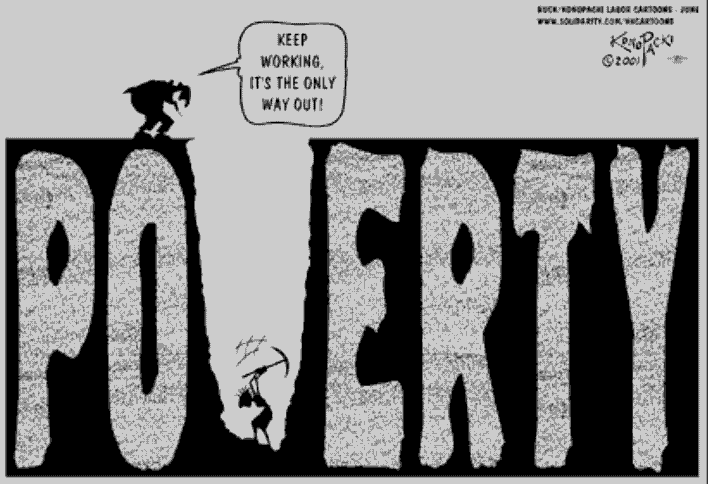Many workers in New Jersey don’t realize they’re being underpaid or that their employer’s actions violate minimum wage laws. You have the right to fair pay, whether you work in a restaurant, a retail shop, or a corporate office. But what happens when your employer doesn’t follow the law?
An employment litigator in NJ can help you recover unpaid wages, fight retaliation, and hold employers accountable under federal and state wage laws. In this guide, we’ll break down how minimum wage laws work in NJ, common employer violations, and the steps you can take to protect your earnings.
Why You Might Need an Employment Litigator in NJ
Workers often face wage-related issues that require legal intervention. If you’ve been underpaid, denied overtime, or experienced wage discrimination, speak to an employment litigator in NJ. Common reasons workers seek legal assistance include:
- An employer refuses to pay back wages.
- Workers are selectively underpaid based on race or gender.
- Employees are misclassified to avoid paying overtime.
- Retaliation occurs after reporting labor law violations.
- Service employees are having their tips withheld illegally.
Employment litigators investigate claims, negotiate with employers, and represent workers in legal disputes to recover lost wages, fight unlawful termination, and ensure fair treatment under NJ labor laws.
What You Need to Know About Minimum Wage Laws in NJ
Federal vs. NJ Minimum Wage: Which One Applies?
The federal minimum wage has been $7.25 per hour since 2009. However, New Jersey workers are protected by stronger state laws.
- As of 2025, the NJ minimum wage is $15.49 per hour, with annual increases for inflation.
- Employers must pay the higher wage if federal and state laws differ.
- If your employer is still paying you below this amount, they are breaking the law, and you may be entitled to back pay plus damages.
Let’s say a janitor in Newark was paid only $13 per hour in early 2025, even though NJ law required $15.49. If he contacts an employment litigator in NJ, he can file a wage claim and recover thousands in lost earnings plus additional penalties.
If your employer is paying below minimum wage, keep records of your pay stubs, hours worked, and any written agreements. If they are not following wage laws, consult an attorney to file a wage claim with the NJ Department of Labor.
Common Minimum Wage Violations in NJ & How to Spot Them
Even though NJ has strong minimum wage protections, some employers try to get around them.
Paying Less Than the Legal Minimum
Some businesses, especially in restaurant, retail, and construction jobs, pay employees under the table at illegal rates.
Imagine a cashier at a small deli being paid only $12 per hour in cash—far below the NJ minimum wage, and being afraid to report it because her boss threatened to fire her. When she speaks with a wage and hour attorney, she learns that retaliation is illegal and recovers unpaid wages.
If your employer is paying you below the minimum wage, you must be paid at least $15.49/hour (or the legal tipped minimum if you work for tips). If you earn less, document everything and seek legal help.
Unpaid Overtime
New Jersey and federal law require overtime pay (1.5x the regular rate) for hours worked over 40 per week. Some employers avoid paying overtime by:
- Misclassifying employees as salaried to avoid overtime pay.
- Requiring “off-the-clock” work without proper compensation.
- Splitting shifts across multiple locations to avoid overtime calculations.
Many workers don’t realize that they can file claims for wage and hour disputes in NJ if their employer withholds overtime pay or doesn’t provide required breaks. If you worked overtime but didn’t receive extra pay, an employment litigator in NJ can help you recover unpaid wages plus penalties.
Illegal Tip Practices
Tipped employees, like restaurant servers and bartenders, must be paid at least $5.26 per hour, with tips making up the difference to $15.49/hour. However, some employers steal tips, force unfair tip pooling, or fail to make up the difference when tips fall short.
Picture a waiter in Jersey City noticing that his paycheck is lower than it should be. His employer is taking a portion of his tips to cover business expenses—that’s illegal. A lawyer can help him file a claim and recover his lost earnings.
Employers cannot take your tips or force you to share them with managers or non-service employees. If your total earnings fall below $15.49/hour, your boss must pay the difference.
How an Employment Litigator in NJ Can Help You Recover Lost Wages
Filing a Wage Claim for Unpaid Wages
You can file a wage claim under:
- The NJ Wage and Hour Law (state minimum wage violations).
- The Fair Labor Standards Act (FLSA) (federal wage and overtime violations).
- The NJ Law Against Discrimination (NJLAD) (for retaliation cases).
An employment law attorney in NJ can help you determine whether your employer’s wage policies violate state labor laws and take appropriate legal action. You may be entitled to unpaid wages plus double damages if your employer knowingly violated the law.
Negotiating a Settlement or Taking Legal Action
Many cases are settled out of court, meaning workers recover lost wages quickly without a long trial. An experienced employment litigator in NJ will:
- Negotiate with your employer to recover your unpaid earnings.
- Take legal action if they refuse to settle.
- Ensure you get compensated fairly under NJ law.
Minimum Wage Law FAQs
What should I do if my employer is paying me below NJ minimum wage?
Document your hours worked, pay stubs, and any communication about your wages. Then, consult an employment litigator in NJ to file a wage claim and recover your lost earnings.
Can my employer fire me for reporting a wage violation?
No. Retaliation is illegal in New Jersey. If you’re fired or harassed for standing up for your rights, you can file a wrongful termination claim and seek damages.
How long do I have to file a wage claim in NJ?
New Jersey law gives workers six years to file a claim for unpaid wages, longer than the federal two-year limit under the FLSA. The sooner you act, the better your chances of recovering full compensation.
How much can I recover in a wage lawsuit?
You may be entitled to double the unpaid wages, plus additional damages if the employer knowingly violated NJ law. An employment lawyer can assess your case and calculate your potential recovery.
Fight for Your Right to Fair Pay
If you suspect your employer is violating minimum wage laws, don’t wait—seek legal help today. An employment litigator in NJ can help you recover unpaid wages, fight workplace retaliation, and hold employers accountable.
Resources
https://grabien.com/story?id=325169
https://www.dol.gov/agencies/whd/compliance-assistance/handy-reference-guide-flsa
https://www.nj.gov/labor/wageandhour/support/faqs/wageandhourworkerfaqs.shtml#minimumwage
https://www.nj.gov/labor/lwdhome/press/2023/20230926_minwage.shtml




